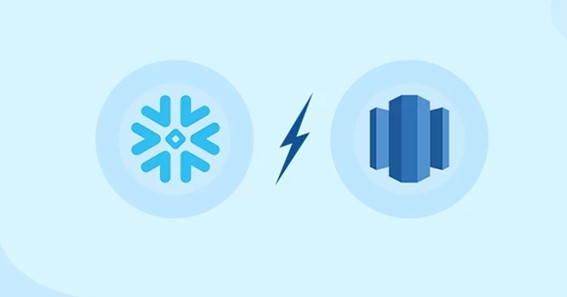When’s the talk about the most popular data warehousing technologies, the names like Snowflake Architecture and Redshift flash in front of us? As they are the ones that provide various enterprises with high performance, better scalability, and the best affordable options. But when talking technically in terms of architecture, performance, scalability, and cost considerations, certain differences arise between them.
So, to help you better understand these differences, we shall assist you in making an informed choice by keeping forth a comparison of these data warehousing requirements, where we will compare Snowflake Architecture vs. Redshift in this post based on these criteria.
Let’s begin!!
Architecture
In the data warehousing requirements, the companies like Redshift and Snowflake have different architectural designs, which affect how well they function and scale. The computing and storage layers are divided in Snowflake, a cloud-native data warehouse. Data is kept in a central storage layer and may be accessed by numerous compute clusters at once thanks to the multi-cluster shared data architecture used by this system. With the help of this design, Snowflake can grow its compute resources separately, allowing for elastic scaling and high concurrency.
Redshift, on the other hand, uses a shared-nothing design in which each cluster’s storage and computing resources are closely connected. It indicates that scaling necessitates adding additional nodes to the cluster as resources for computing and storage are provisioned concurrently. When thinking of Redshift Vs. Snowflake, Redshift offers less elasticity than Snowflake, although allowing manual node addition or removal.
Performance
When talking about the comparative performance aspect of both these, Snowflake and Redshift have great query execution and optimization capabilities in terms of performance. Data is divided into manageable, compressed, and optimized pieces using Snowflake’s exclusive Micro-partitions indexing technique. As a result, Snowflake can minimize data scans during query execution and provide quick speed, particularly for complicated queries.
On the other hand, Redshift provides the advantage of column-based storage and the use of massively parallel processing (MPP) to execute queries at a high rate of speed. Zone maps and column encoding techniques are used to optimize data retrieval, and query execution time is also improved through the use of optimization techniques. Redshift additionally gives users the option to generate, sort, and distribute keys to improve query efficiency.
Scalability
Scalability is a crucial factor for data warehousing solutions, particularly as data quantities increase. The architecture of Snowflake excels in this regard, enabling smooth scalability of compute resources. Without affecting the underlying storage layer, Snowflake enables you to scale up or down the computing resources in response to your workload demands. Flexible allocation of resources and cost-cutting are made possible by this.
Redshift provides scalability by enabling you to expand the cluster’s nodes. Redshift’s scaling, however, requires manual administration and the delivery of extra nodes. To achieve optimal cluster utilization, this process might be more laborious and demands meticulous planning. Redshift has a maximum node count restriction, which can be a problem for workloads that are very extensive in range.
Cost Considerations
When assessing data warehousing options, cost is an important consideration. According to Snowflake’s pay-as-you-go pricing approach, you are only charged for the storage and computing resources that you use. Because of Snowflake’s granular pricing system, you may scale services autonomously and only pay for what you need. Snowflake’s pricing, however, could be more expensive than Redshift’s, particularly for less intensive or rare usage workloads.
Redshift provides affordable choices, especially for heavier workloads or regular usage. In order to receive significant cost reductions, it offers dedicated account pricing, where you can commit to a particular instance type and duration. Pricing from Redshift is often less expensive than that from Snowflake, specifically for long-term commitments. Redshift’s price is based on the total number of provided nodes. Thus, it’s important to keep in mind that adding or removing nodes might have an influence on expenses and calls for cautious planning.
Finally
Talking in terms of Redshift Vs. Snowflake, Snowflake, and Redshift both possess the ability to become the best data warehousing options, each with particular advantages and disadvantages. The design of Snowflake offers unmatched elasticity and scalability, facilitating the effective allocation of resources as well as expense optimization. It provides outstanding performance and excels at processing complex queries. Redshift, on the other hand, offers a cost-effective alternative thanks to its shared-nothing design and pricing structures, particularly for larger workloads. It provides efficient query execution and optimization capabilities.
In the end, the decision between Redshift Vs. Snowflake is yours and ultimately comes down to your needs, financial situation, and workload characteristics. It is recommended to thoroughly assess your requirements, considering data volumes, query complexity, anticipated growth, and cost considerations, to choose the solution that would work best for your organization’s data warehousing requirements.
Click Here – Enhancing Customer Experience with Zoho Call Center: Best Practices and Strategies
